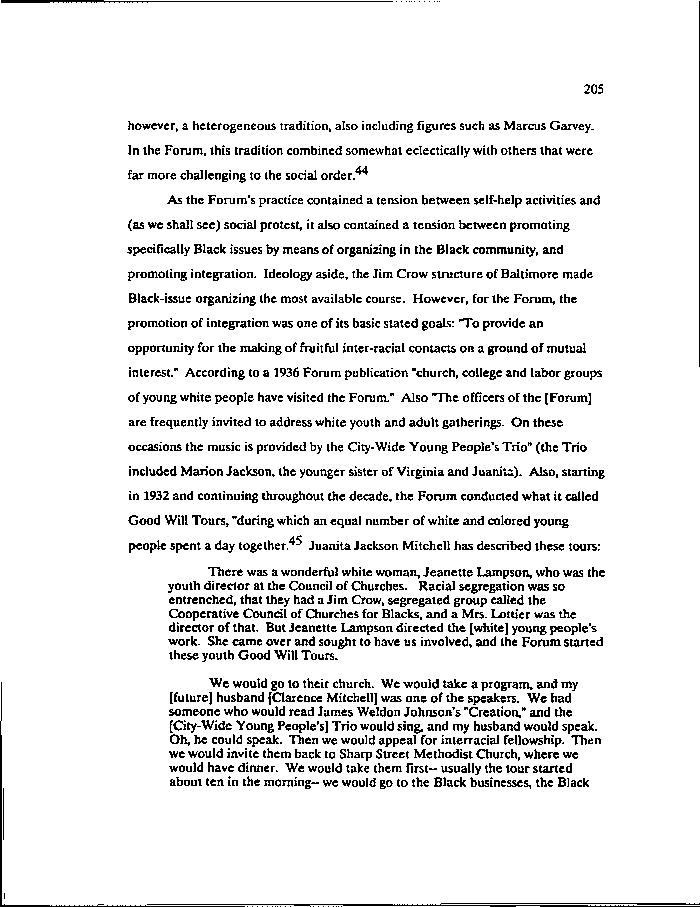|
205
however, a heterogeneous tradition, also including figures such as Marcus Garvey.
In the Forum, this tradition combined somewhat eclectically with others that were
far more challenging to the social order.
As the Forum's practice contained a tension between self-help activities and
(as we shall see) social protest, it also contained a tension between promoting
specifically Black issues by means of organizing in the Black community, and
promoting integration. Ideology aside, the Jim Crow structure of Baltimore made
Black-issue organizing the most available course. However, for the Forum, the
promotion of integration was one of its basic stated goals: To provide an
opportunity for the making of fruitful inter-racial contacts on a ground of mutual
interest." According to a 1936 Forum publication "church, college and labor groups
of young white people have visited the Forum." Also The officers of the [Forum]
are frequently invited to address white youth and adult gatherings. On these
occasions the music is provided by the City-Wide Young People's Trio" (the Trio
included Marion Jackson, the younger sister of Virginia and Juanita). Also, staning
in 1932 and continuing throughout the decade, the Forum conducted what it called
Good Will Tours, "during which an equal number of white and colored young
people spent a day together. 5 Juanita Jackson Mitchell has described these tours:
There was a wonderful white woman, Jeanette Lampson, who was the
youth director at the Council of Churches. Racial segregation was so
entrenched, that they had a Jim Crow, segregated group called the
Cooperative Council of Churches for Blacks, and a Mrs. Lottier was the
director of that. But Jeanette Lampson directed the [white] young people's
work. She came over and sought to have us involved, and the Forum started
these youth Good Will Tours.
We would go to their church. We would take a program, and my
[future] husband (Clarence Mitchell] was one of the speakers. We had
someone who would read James Weldon Johnson's "Creation," and the
[City-Wide Young People's] Trio would sing, and my husband would speak.
Oh, he could speak. Then we would appeal for interracial fellowship. Then
we would invite them back to Sharp Street Methodist Church, where we
would have dinner. We would take them firstó usually the tour started
about ten in the morning- we would go to the Black businesses, the Black
|

